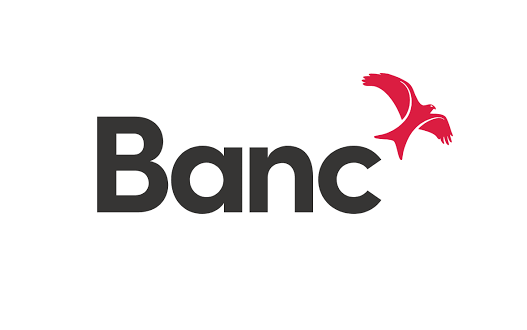
This article was first published by Marine Energy Wales – to view the original article click here
It was a calm and foggy morning the day I set off from Aberdeen Port to visit Kincardine floating offshore wind farm. Located 15km off the Scottish coast, it is the largest grid-connected floating offshore wind farm in the world.
Kincardine is a 50-megawatt (MW) project, with the potential to generate enough electricity to power 35,000 homes. The turbines float in waters 60 – 80 metres deep and the project has been fully operational since 2021. In comparison, some of the test and demonstration projects that could be built in the Celtic Sea are around 100 MW, with the potential to power over 93,000 homes per year.
Having travelled all the way from Pembrokeshire with my colleague, we were eager to see what something of this scale would look like in real life. Soon, through the sea fog, known locally as ‘haar’, we caught our first glimpse of the huge 9.5 MW turbines, standing at around 190m to the top of the highest blade.
Integrated onto floating platforms or foundations, these turbines are seriously impressive, and it is hard to comprehend the incredible amount of work that has gone into deploying these projects in Scottish Waters.
The success of the Kincardine project cannot be denied, and as Test & Demonstration projects should, it has provided several key lessons which I have outlined below. There is a lot we in Wales can learn.
Ports
Because of a lack of suitable port capabilities in the UK, the current solution for major component repair and replacement on the Kincardine turbines is to disconnect them from their floating platforms and tow them from the wind farm site to the Port of Rotterdam. Once the exchange has taken place, the turbine is then towed back to site and connected, to start producing renewable energy again.
This process is extremely costly for the wind farm operator, Kincardine Offshore Wind Limited. They are currently working with local organisations and businesses to ensure that in future, this activity can be done in local ports or offshore at the wind farm site itself. Either would reduce the operation and maintenance costs, and avoid the complexities of disconnecting the turbines. Developing regional port facilities is crucial to driving down the costs of future floating offshore wind projects.
Supply chain
The foundations were built in Spain, and the wind turbines were integrated onto them at the Port of Rotterdam. The turbines were then towed to the wind farm site 15km off the coast of Scotland. All of this means there has been very little contribution from UK-based businesses within the Scottish and wider UK supply chain. We can learn a lesson from this.
Preparing local businesses for the future of offshore wind is essential to ensure social and economic benefits are maximised and local and UK businesses have the opportunity to contribute to the deployment of wind farms here in the Celtic Sea.
Revenue support mechanism
The Kincardine project is supported by the UK Government’s previous revenue support mechanism, known as Renewable Obligation Certificates (ROCs). This mechanism encouraged the deployment of renewable energy generation projects during the early stages of technology development, when costs were high.
Kincardine and Hywind Tampen have been given the most support, both receiving 3.5 ROCs/MWh. This demonstrates that when the necessary and correct revenue support mechanism is in place, it is met with private investment, which in this case resulted in these innovative test and demonstration projects being deployed.
Closer to home, there are currently four test & demonstration projects in the Celtic Sea that have secured seabed exclusivity with The Crown Estate:
- Erebus, Blue Gem Wind (100 MW)
- Llyr 1 & 2, Floventis (200 MW)
- White Cross, Flotation Energy and Cobra JV (100 MW)
- Twin Hub, Hexicon (32 MW)
With a combined capacity of up to 432 MW, these projects have the potential to act as a catalyst for investment in port infrastructure and supply chains, preparing the region to maximise the benefit from the Round 5 pipeline of 4.5GW and the further 12GW of offshore wind which was earmarked by the UK Government in November 2023.
Given the correct support, some of these test and demonstration projects could be producing renewable electricity pre-2030, providing significant supply chain opportunities, thousands of jobs, and boosting the economy.
As more floating offshore wind projects become eligible to bid for a Contract for Difference (CfD) through achieving consent, competition for revenue support will only become fiercer. Celtic Sea Test and Demonstration projects are at risk of being sidelined in favour of larger eligible projects in other regions of the UK.
To avoid this, we must learn lessons from projects like Kincardine.
Why do we need test and demonstration projects in the Celtic Sea?
Without the deployment of test and demonstration projects in the Celtic Sea, we will not maximise the social and economic benefits for Wales and the South West.
Deploying test and demonstration floating offshore wind projects in the Celtic Sea will ensure a stepping-stone approach for local businesses, giving them the experience to scale up with the industry, allowing them to compete for contracts on the larger commercial-scale projects that are likely to be delivered in the 2030s.
Test and demonstration projects can:
- Help reduce costs and de-risk technology through learning, innovation, and collaboration.
- Create the right environment for UK businesses to succeed and support a timely green energy skills transition.
- Enable investment to develop port infrastructure to support the future Celtic Sea floating offshore wind pipeline.
- Provide an opportunity to create a strong positive public perception of floating offshore wind projects, and demonstrate the associated benefits with these projects.
- Help to maintain leadership in the offshore wind industry, in addition to creating a lucrative export market.
What’s next for the Celtic Sea?
The future of Celtic Sea test and demonstration floating offshore wind projects is uncertain. Government and industry must continue to work together to address the barriers these projects currently face.
The UK must maintain leadership in the offshore wind industry ensuring the timely delivery of future fixed and floating offshore wind projects in the UK necessary to meet the ambitious net zero targets, whilst boosting the economy, and strengthening our energy security. We believe a 3-pronged approach is necessary to unlock these vital projects, as outlined blow.
Revenue Support Mechanism
We believe the current CfD mechanism is not fit to support these early-stage innovation projects. As the industry matures, smaller-scale regional projects that have seen significant private investment are unlikely to remain competitive in future Allocation Rounds, missing out on securing the necessary financial support required to achieve final investment decision. This is due to larger eligible projects becoming more cost effective.
A mechanism to overcome this challenge could be the UK Government introducing a test and demonstration specific ‘Hurdle CfD’ as suggested by Tim Pick in his Independent Report in 2023. This would give projects financial support based on a milestone being reached, increasing investor confidence in these innovative projects.
Public Support
By increasing awareness and improving public perception of floating offshore wind, through community engagement programmes such as the Marine Energy Engagement Plan, and consistent messaging from industry and stakeholders, we can create positive perceptions of floating offshore wind and mitigate delays during the consenting process due to public opposition.
Increasing awareness of the opportunities the industry presents will also be key to garnering public support and ‘bringing them on the journey’ to an energy transition where offshore wind takes centre stage.
Bold and Determined Leadership
The UK Government, including Great British Energy, Welsh Government, and The Crown Estate should work together and take bold action to ensure these regional test and demonstration projects in the Celtic Sea and wider UK succeed.
Collaboration and radical intervention will see an environment where all clusters in the UK win, through the investment and development of port facilities and supply chain opportunities, resulting in well-paid jobs and creating lasting and shared prosperity for the nation.
Settling into the long train ride back to Wales, as we pass Stonehaven I happen to catch a glimpse of the floating wind turbines we had visited yesterday. I take a moment to reflect on theor impressive size and the gentle giant turning blades in the haar, symbolic of a clock counting down.
Time is running out to seize the opportunities for the Celtic Sea. I am both concerned and excited about the role that I and MEW can play in sharing these insights to ensure that test and demonstration projects can contribute significantly to the development of the floating offshore wind industry in the Celtic Sea.





